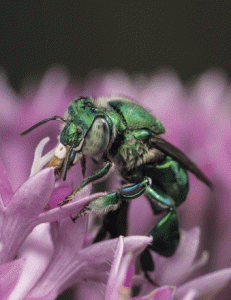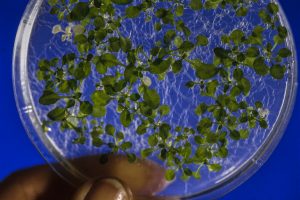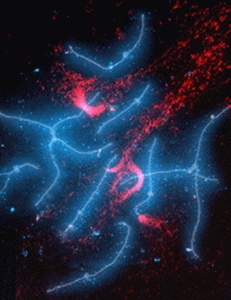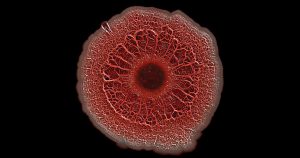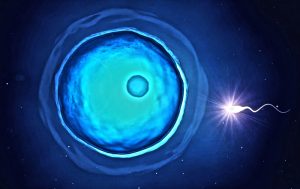Enter your address to receive notifications about new posts to your email.
Science & Publishing
-
Science & Publishing
Clues to the innate drug resistance of a cocoa-fermenting pathogen
At first glance, the yeast Candida krusei seems as innocuous as microbes come: it’s used for fermenting cocoa beans and gives chocolate its pleasant aroma. But it’s increasingly being found as a pathogen in immunocompromised patients—and C. krusei infections aren’t always easy to cure. This yeast is naturally resistant to fluconazole, a first-line antifungal that’s…
-
Science & Publishing
An extra chromosome that does double duty
Inheriting an extra chromosome can sometimes be disastrous, but in the September issue of G3, Linder et al. investigate a chromosome duplication that helps yeast survive harsh conditions. Yeast with an extra copy of chromosome IV better tolerate hydrogen peroxide exposure, largely thanks to an extra copy of a gene that detoxifies the chemical. This…
-
Science & Publishing
Behind the cover: orchid bee genome
A green, iridescent bee perches on a pink flower, extending its proboscis to reach the sweet nectar inside. He’s not just after a meal—he’s also collecting fragrant substances to store inside his hollow rear legs. Later, he’ll buzz his wings to release the aroma with the hope of attracting a mate. The cover of the…
-
Science & Publishing
Missing kidney mutation found
It’s surprisingly common for babies to be born missing one or both kidneys; an estimated one in one thousand babies are born with a single kidney. Called renal agenesis, this condition is fatal if both kidneys are missing, and having just one can also lead to serious health problems like hypertension and early renal failure.…
-
Science & Publishing
New in G3: orchid bees, worm sleep, and ghostly fish
Check out the September issue of G3! Table of Contents Genome Reports Whole Genome Sequence of the Heterozygous Clinical Isolate Candida krusei 81-B-5 Christina A. Cuomo, Terrance Shea, Bo Yang, Reeta Rao, Anja Forche G3: Genes, Genomes, Genetics September 2017 7: 2883-2889; DOI: https://doi.org/10.1534/g3.117.043547 The Nuclear and Mitochondrial Genomes of the Facultatively Eusocial Orchid Bee Euglossa dilemma Philipp…
-
Science & Publishing
How model organism researchers can help solve rare disease puzzles
For many of the roughly 300 million people around the world with rare diseases, the road to diagnosis can be long, painful, expensive, and disheartening. Around eighty percent of very infrequently seen undiagnosed diseases are estimated to have a genetic basis, but even with modern DNA sequencing techniques, the causes are often unclear. In these…
-
Science & Publishing
A gene linked to human obesity also controls fat deposition in plants
There’s no such thing as an obese plant. But that doesn’t mean plants can’t teach us something about fat. In the September issue of GENETICS, Ducos et al. show that a protein that controls fat accumulation in humans has a similar function in Arabidopsis. They also find that the human and plant proteins may be…
-
Science & Publishing
Cause of neurological disorder in Belgian Shepherds discovered
Malinois dogs are working animals known for being used by the Secret Service to guard the White House. These dogs, a subtype of the Belgian Shepherd breed, are robust, with an average life expectancy of 10-12 years. But some puppies are afflicted by a genetic condition called spongy degeneration with cerebellar ataxia (SDCA). A puppy…
-
Science & Publishing
September GENETICS Highlights
Check out the September issue of GENETICS by looking at the highlights or the full table of contents! ISSUE HIGHLIGHTS MicroRNAs that contribute to coordinating the immune response in Drosophila melanogaster, pp. 163-178 Magda L. Atilano, Marcus Glittenberg, Annabel Monteiro, Richard R. Copley, and Petros Ligoxygakis Atilano et al. present a Drosophila post-infection survival screen that takes advantage of a library…
-
Science & Publishing
Switching biofilm formation on and off in yeast
When a group of microorganisms needs to stick together, they build a biofilm. The cells cement themselves together onto a surface, forming durable structures that are notoriously hard to remove. In a medical setting, biofilms can contribute to dangerous antibiotic resistance. In the August issue of G3, Cromie et al. use a yeast model to…
-
Science & Publishing
Chemical preserves mouse fertility after radiation
After surviving breast cancer, almost forty percent of female patients are affected by primary ovarian insufficiency (POI). This condition, in which ovaries don’t produce normal amounts of hormones or release eggs regularly, can result in health problems and an inability to have children. But POI isn’t caused by cancer itself—the actual culprit is DNA damage…

![Cocoa farmer David Kebu Jnr holding the finished product, dried cocoa beans ready for export. Image by Irene Scott/AusAID [CC BY 2.0], via Wikimedia Commons.](https://s36063.pcdn.co/wp-content/uploads/2017/09/Webp.net-resizeimage-12-300x201.jpg)
![Photo by publicdomainpictures.net. [CC0]](https://s36063.pcdn.co/wp-content/uploads/2017/09/red-doubledecker_770x-300x199.jpg)
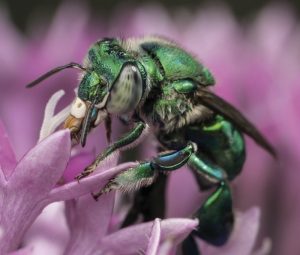
![Photo by Hey Paul Studios via Flickr. [CC BY 2.0]](https://s36063.pcdn.co/wp-content/uploads/2017/09/kidney_770x-1-300x233.jpg)
